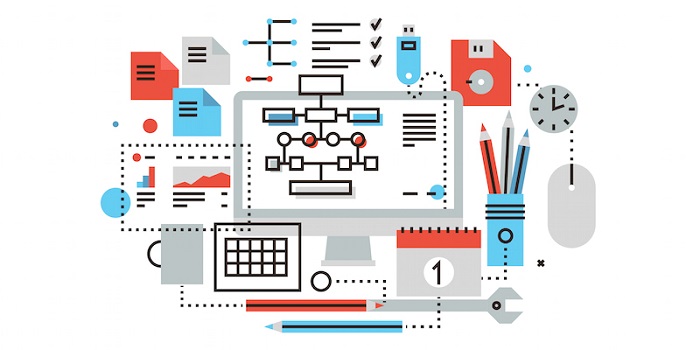Business process management is an essential step to a successful ERP implementation. With this, various approaches are available within our reach.
Within an ERP implementation, there are various levels of business process management to consider just as in the new system.
Business Process Management Solution with ERP System.

Business Process Management (BPM) – Business process management is an essential approach to uplift, improve, and analyze business methods to an organization’s overall goal and strategy. It allows businesses to have cheaper solutions and a more feasible mission.
Business Process Improvement (BPI) – There are plenty of initiatives within business process management; first being business process improvement. It’s essential to analyze the critical processes within an organization that are competitive differentiators.
First, organizations detect the ongoing state and primary key performance indicators to measure success. Next, organizations find the primary cause, ensure that the root cause is to optimize efficiency.
Business Process Reengineering (BPR) – This process reconstructs the fundamentals of the current process but requires a more radical change. The BPR used when ongoing operations can’t be progressed by making minor changes but need to be reconstructed from the start, creating a new process from first to last.
Business Process Optimization (BPO) – Optimization analyzes all of the current processes within the business. It initiates to improve them so that a certain extent reduces the total cost of the company.
It is essential to ensure the process is operating at maximum efficiency because when you automate an inefficient process, you only make an inefficient process faster.
It is the reason why BPM is so crucial to an ERP implementation. Nowadays, ERP systems are very reliable. There are thousands of ways ERP software will maintain your business needs.
It clearly shows the ERP vendor how one may like his processes to look like so they can select the configuration that accurately aligns with those processes. It also gives information on what methods may require customization and an understanding of additional costs you may incur for it.
The right level of business process management choice is crucial to creating a roadmap for ERP implementation.
Enterprise resource planning (ERP) systems represent a realistic vision of the business from minor details to IT architecture. But ERP systems are big and complicated systems and warrant careful planning and execution, not ensure the successful implementation.
Business Process Management (BPM) is an organized approach to breakdown, analyze, support, and continuously improve the fundamental process.
Enterprise resource planning (ERP) is a type of software that provides users access to a suite of applications. These applications created with multiple business functions in mind, such as finance, human resources, management, and others.
The main functions of an ERP system are to store, protect, and take out data from a common database, whenever needed, allowing for a single source of truth.
It enables all employees to work with the same set of data. No longer do companies have to stand by while different departments work with outdated stock levels or ledgers. ERP systems provide up-to-the-minute data, ensuring all your employees stay on the same page. A common database also eliminates doubt, as your employees are certain, everyone is working with the same information. It leads to more confident business decisions.
ERP systems provide interfaces through which users can access centralized information, giving convenience, and improved efficiency. With ERP, users don’t have to re-enter the same data into multiple systems, nor do they have to look far for information needed across departments. ERP modules can easily share data to give a better picture of your company.
ERP business process management systems concentrate more on the different business functions and the systems that support them. These include accounting, HR, inventory management, etc.
ERP plays a crucial role in tracking data across such modules. ERP allows users to track everything from sales to employee wages, all while allowing a free flow of information between modules.
BPM offers workflow customization
An ERP vendor can only provide the entire HR module, which can be costly. A BPM system allows the business to manage that workflow with a level of customization only not available from ERP systems. Unfortunately, ERPs don’t always provide the same granular data that a BPM system would. Both types of software utilize business intelligence tools but differ in the scope of their analyses.
Both provide business intelligence.
Both systems provide analytics using your KPIs and custom reports. However, the efficacy of specific processes can easily be tracked by BPM. BPM’s business intelligence (BI) tools provide information into processing times, the number of closed methods, and the number of those open.
ERP provides data storage and visibility
ERP is a software that compiles and stores data to a central server. Moreover, various departments can insert data, and it all gets sorted in one location. Besides, users get a solid overview of the company and how its functions are interrelated. Therefore, ERP provides users with a company-wide view that BPM does not offer. It also tends to store a number of data, giving access to an extensive analysis across all business platforms showing how they’re interrelated.
Can You Use Them Together?
BPM is integrated into a more extensive ERP system when the ERP isn’t managing a process, as well as a BPM would. It can lead to numerous inefficiencies in your business and tedious workarounds as you try to fix them.
A BPM system highlights essential processes in your business that an ERP would otherwise pass over. This heightened level of detail strengthens the process managed by the BPM, allowing the more extensive ERP to facilitate more general business functions.
If integrated properly, the two can complement each other by filling in the gaps. Running them together can give you the best of both worlds. You can have automated process management that monitors the use of resources and assigns tasks. So there might not be a need to pick one or the other if using both is the best choice for your organization.